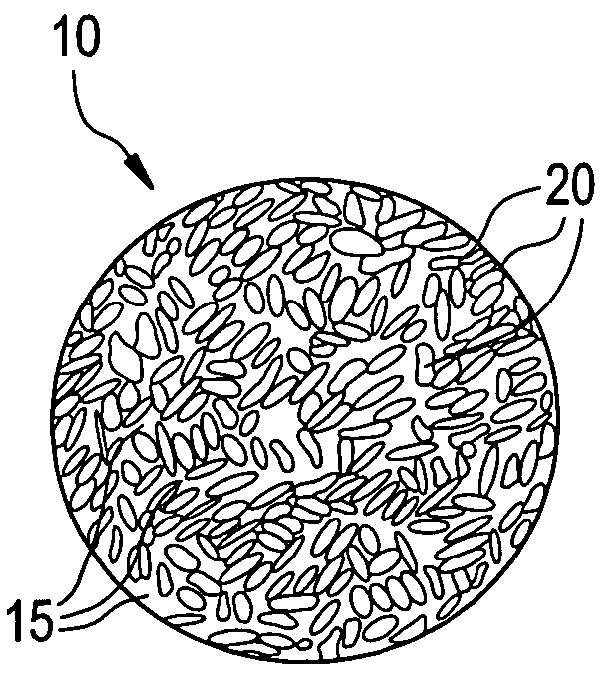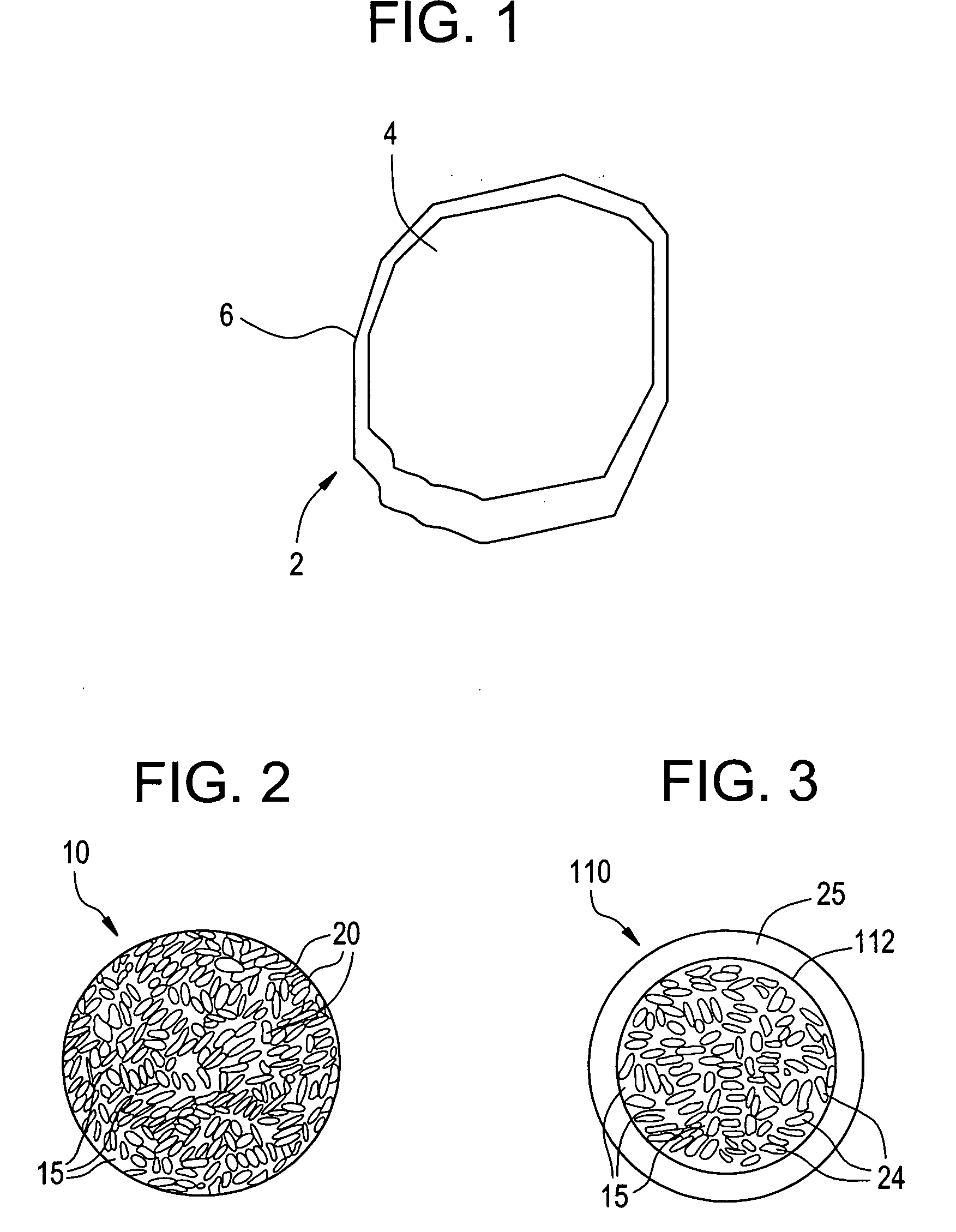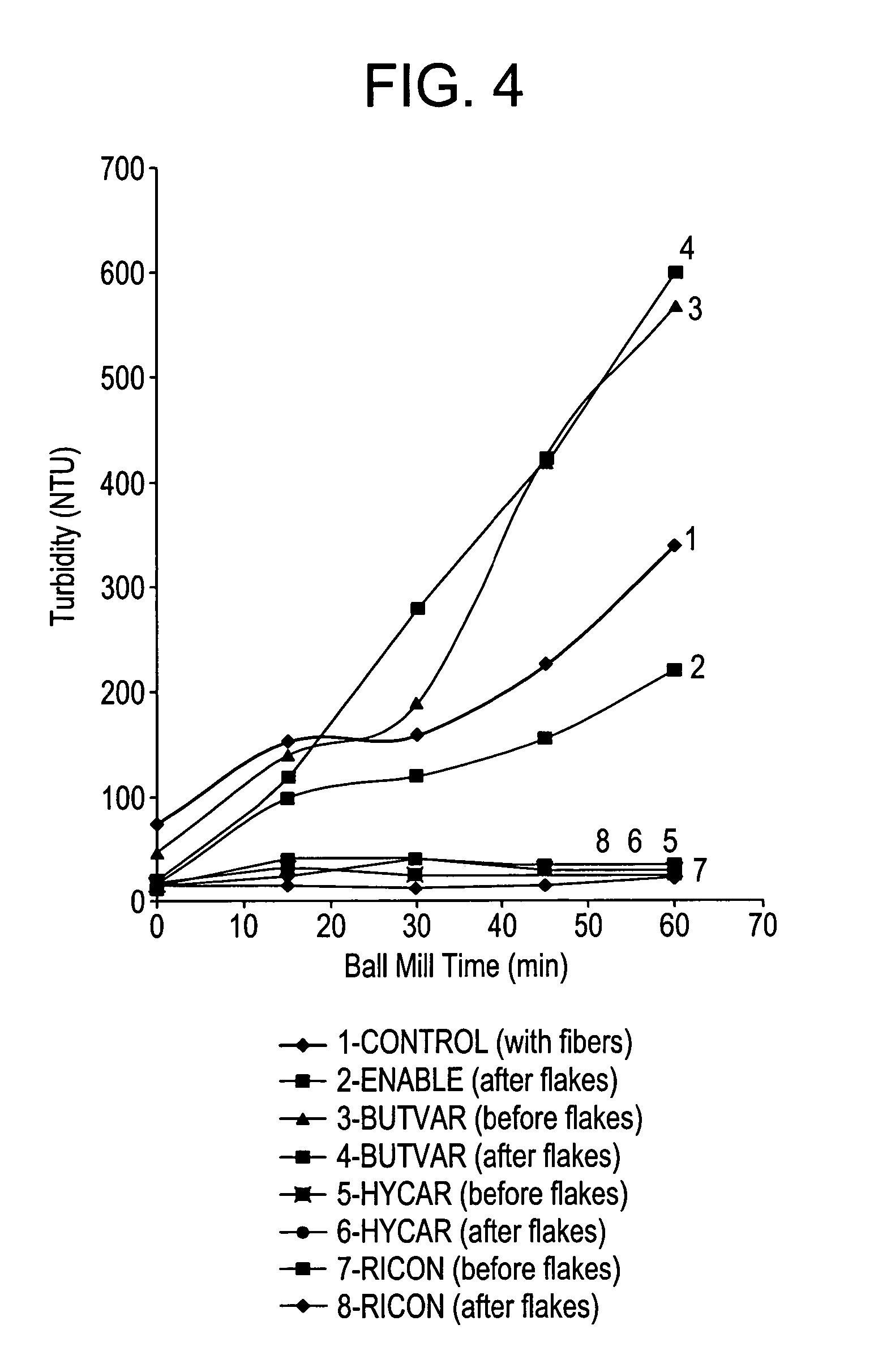Particulate material containing thermoplastics and methods for making and using the same
- Summary
- Abstract
- Description
- Claims
- Application Information
AI Technical Summary
Benefits of technology
Problems solved by technology
Method used
Image
Examples
second embodiment
a process is for making composite proppants, gravel packing, or filtration media of the present invention. In this embodiment, a binder stream and a filler particle stream are fed to a high intensity mixer to prepare a homogeneous slurry stream. Slurry stream feeds a granulator to produce a granulated product stream. The binder stream contains resin, water and conventional additives. Typically, the resin is a resole and may act as its own crosslinking agent. Coupling agents are also typical additives. A typical granulator is an Eirich mixer, such as an Eirich R11 mixer, manufactured by Eirich Machines, Inc., Gurnee, Ill.
Typically, the granulator is operated as a batch process and is operated as disclosed generally in EP 308 257 and U.S. Pat. No. Re. 34,371, both of which are incorporated herein by reference. For example, EP 308 257 discloses making ceramic particles in an Eirich machine described in U.S. Pat. No. 3,690,622. The machine comprises a rotatable cylindrical container, t...
third embodiment
a process for making proppants, gravel packing, or filtration media of the present invention resembles the process of the second embodiment except that the granulated material stream is fed dried but uncured to a refining apparatus to mechanically increase the sphericity of the granulated material to a sphericity of at least about 0.8, preferably at least about 0.85, and more preferably at least about 0.9, and produce a stream of such mechanically treated material.
If it is desired to coat the composite particles, then the cured (or partially cured) stream of composite particles discharge from the curing apparatus and then feed the coating apparatus. The coating apparatus is typically a profiled rotating drum or some form of batch mixer. This rotating drum apparatus may have a rotation speed of 16-20 rotations / min. Typically, the coating resin stream is preheated to 50-60 degrees C. and sprayed into the rotating drum apparatus (containing the formed composite particles) through a no...
first embodiment
a process for making composite particles of the present invention with melamine / phenol-formaldehyde as a binder employs melamine resins, with or without free methylol groups, which may be set by heat. In this process, a melamine crystal stream and an alkaline resole resin particle stream, water and conventional additives, e.g. coupling agents are fed to a mixer to prepare a homogeneous binder. Just prior to mixing with the filler, the dispersion formed by the mixing step is converted to a water soluble A-stage, unreacted, uncured but curable binder composition by adding to the dispersion an acid such as oxalic acid, sulfamic acid, nitric acid, or methane sulfonic acid in an amount sufficient to drop the pH to a level of from 2.5 to 6. A “latent acid” (a pH neutral substance that chemically reacts, usually with application of heat to form an acidic condition) may also be used. A latent acid such as ammonium sulfate is preferred. The temperature when the binder and acid are mixed is n...
PUM
| Property | Measurement | Unit |
|---|---|---|
| Grain size | aaaaa | aaaaa |
| Temperature | aaaaa | aaaaa |
| Temperature | aaaaa | aaaaa |
Abstract
Description
Claims
Application Information
 Login to View More
Login to View More - R&D
- Intellectual Property
- Life Sciences
- Materials
- Tech Scout
- Unparalleled Data Quality
- Higher Quality Content
- 60% Fewer Hallucinations
Browse by: Latest US Patents, China's latest patents, Technical Efficacy Thesaurus, Application Domain, Technology Topic, Popular Technical Reports.
© 2025 PatSnap. All rights reserved.Legal|Privacy policy|Modern Slavery Act Transparency Statement|Sitemap|About US| Contact US: help@patsnap.com



